This essay is primarily focused on a specific phenomenon within Egyptian intellectual history over the past sixty years. Although informed by a set of local conditions and references, I believe that the discussion may lead to a productive reflection upon the relationship of aesthetics to context and cultural practice, and upon the nature of art institutions and their normalizing tendencies. It may also provide a new perspective through which to engage the display and exhibition experiences provided by those art institutions that have emerged internationally in recent decades.
***
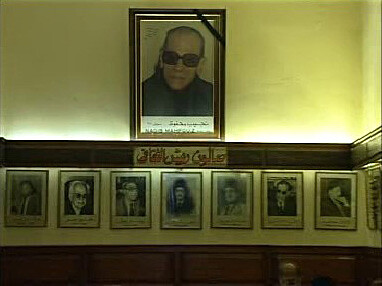

It seems to me that invoking the corrupt intellectual allows for the real possibility of finally going beyond the tired dichotomies endlessly resurrected in such panels. The too-often blindly accepted oppositions between tradition and contemporaneity, independence and state affiliation, the liberal and the reactionary have dominated the discourse around cultural production in this region for far too long.
For the corrupt intellectual is a figure that I have unfortunately known well and up close through the years. I first encountered him in childhood, as the family friend pontificating on the logic of underdevelopment, expounding theories of conspiracy and the necessity of developing the nation. Later, in my teenage years, he appeared again, smiling wanly at me as he recognized me under all that hair and recalled my parents’ credentials within a certain culturally and politically engaged milieu. Finally, in more recent years, as the contours of my own practice became more publicly visible, the corrupt intellectual has returned as an increasingly hostile figure.
This is a figure who has been deeply implicated in the replication of totalitarian ideas and in the support of an order that, to say the least, has failed to uphold any of its promises. A figure that has consistently and self-servingly promoted a variety of intellectual trends, from the secularist to the Islamic-Marxist, from the Liberal-Democratic to the Democratic-Islamist, depending on what happened to be in vogue at the moment. So what then motivates this, my own seemingly perverse quest to defend a figure that has so distorted public life?
While proposing to open a discussion on the usefulness, even the importance of this figure, I refuse any argument that would construct what I refer to as the “corrupt intellectual” as a transcendental signified floating above the dichotomies of public discourse and resolving them. Far from it: the corrupt intellectual is deeply implicated in the production of official mainstream culture—part and parcel of the current historical moment, a constitutive, immanent figure of the landscape. And it is this very significance that makes this figure so pertinent to our argument. A recuperation of the corrupt intellectual serves as an entry point for engaging and hopefully refining the terms of the aforementioned dichotomies bundled into the commonplace opposition this figure assumes with regard to a self-defined independent art scene. We ultimately take up these opposed terms only so as to first abandon them, then recuperate them—this time, however, within a less telic argument, and one that explicitly acknowledges cultural politics as its field. For even the text you are reading now is proud to be deeply polemical, and ultimately remains in the service of the dialectical process that it refutes.1 It is also an argument situated within a moment of institutional transition, when new models are actively supplanting earlier ones and all positions are contested.
But before beginning, let us ask what exactly this means in relation to the positions involved: i.e., mine, as the author mounting what must seem like an inexplicable defense of a figure whose claims and statements have supported the flagrant usurpation of the public sphere for at least the past sixty years of Egyptian history; you, the reader informed by vantage points, agendas, and interests; and ultimately that phantasmatic figure of the corrupt intellectual haunting our discussion. What does that figure do for us exactly? What kind of example does it set? What kind of resistance to the dominant order, if any, does it make possible?
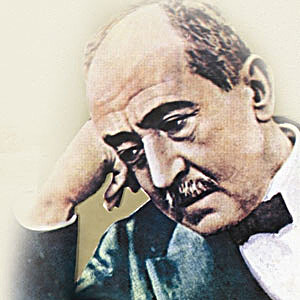

The Crowd Walks Down the Street: Dialectics Abandoned and Regained
The density of a crowd walking in the street, and how that kind of density plays out in relation to the crowd’s surface, produces a kind of symbiotic and organic relationship. In this context, density functions at different registers. The first concerns the historical depth of various discursive regimes and the symbolic capital they produce; another refers to a detailed intensity; the highly individual and individuated gestures, the isolated intentions that become articulated as a charged collective of individuals, and the very state of consensus that allows for the crowd to come into being in the first place. In a sense, the crowd is where a seething mass with a unified understanding of its own presence is born, a conglomeration of frictions and tensions that manages to resolve itself into an identifiable entity.
Density relates to two distinct yet interdependent modalities of operation. It refers on the one hand to the heavy and tired legacy of failed discourses that have provided opposition to, and support for, the status quo in the region; it constitutes a sort of discursive article of faith, lending a sense of identity to the crowd itself, a sense of historical purpose to the social organism whose legacy involves ideologies such as socialism, pan-Arabism, Marxism, nationalism, and Islamism. On the other hand, density refers to the sociopolitical practice of these ideologies as a set of rules and regulations that actively impact the daily lives of all the members of the social organism. As a significant element in the formation of the crowd, density here inhabits a unique position as simultaneously antithetical to the regimes of discursive power and constitutive of that power itself. On another level, density helps us to describe how groups of individual citizens walking down city streets are transformed by proximity and the very rules of their shared landscape into “the crowd.” A new entity with its own “depth” is born.
Straddling various dualities, the crowd is always the other to that legacy of state power and dissent, while simultaneously serving as the legitimizing source for both. Nonetheless, the processes of legitimization inevitably increase the distance between discourse (what is used to explain, analyze, and quantify) and subject (in this case the mysterious crowd), by clearly differentiating their roles, making one serve the other. The crowd, through its polyphony, its irresolvable contradictions, its ability to function as a collective while relying on the individual and its stubbornly resistant irreducible core, is, maybe even metaphorically, positioned as an absolute other to both the state (often represented metonymically by its members) and the public figures of dissent—both of whom, ironically, claim to speak for that crowd.


The form of density characteristic of the crowd is never possible within successfully mediated spaces such as those of the new global museum franchise model or the hypercapitalist art “marketplace” of abstract value. The projected success of a marketable future is the basis for both endeavors. The functionalist telos informing the activities of both museum and marketplace calls for the instrumentalization of all elements that come into contact with them, and makes the formation of the crowd an undesirable and distant possibility. Contemporary cultural practice, with its anxious self-referentiality, attempts to consume the image of that crowd, to annex it as a mythical and indexical signifier of art’s immediacy and engagement with the public sphere. Insisting on this connection also aids in the accrual of symbolic cultural capital, which is, in turn, communicated to the audience that flocks to these institutions. This symbolic cultural capital is accumulated and ultimately translated into value through the actions of both museum and marketplace.
The crowd’s contradictions—positioned both at the margins and at the heart of the dominant power, silent and vocal, unified and dramatic, collective and lonely—make it especially useful for consumption and re-circulation within museum and marketplace. In this relationship, the crowd’s density is referenced by the institution in order to articulate the relevance of abstracted spaces of cultural reflection to the general social sphere. It is perhaps at this moment that the rehabilitation of the corrupt intellectual as a remote, yet still present figure becomes helpful for complicating the ways in which engineered cultural spaces today evoke the crowd for their own purposes.
The Specificity of the Corrupt Intellectual
The corrupt intellectual offers a new specificity to the historical experience of cultural practices and to an understanding of the material produced through them. An awareness of that potential should not, however, be confused with an approval of or an agreement with the corrupt intellectual’s project. In this sense, my defense could be considered as a strategic coming to terms with the relationship between the labor of a group of state functionaries and the crowd that forms in the streets of the city where that labor actually materializes in terms of rules and regulations and, most importantly, actual forms of public address. Thus a profound and, in this case one can say, political engagement with the act of production is only possible through a deep engagement with its context and an implicit acceptance of the presence of this omnipresent and immanent figure. For every rule, every form of speech produced in this context lays down its own horizons of possibility and its own limits to the act of imagining.2
However, the presence of these spaces—the dense and crowded street with its constant reminder of power differentials, of violence, dangers, codes of communication, as well as the corrupt centers of hegemonic knowledge production that are so clearly devoted to propping up the context that threatens to define the crowd’s shape yet never quite accounts for its specificity—helps to shape how we, those who live and operate under that context’s regime, understand and come to define knowledge itself.
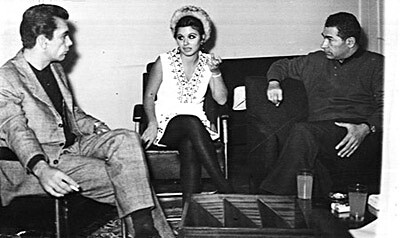

With such an understanding, it is no longer possible to construct knowledge as a form of symbolic cultural capital that is the expression of an ideal “liberated” and liberal subjectivity. So if the machinations of PR and marketing departments are crucial to promoting the refined experiences of the “free” and “informed” museum visitor, art history student, or seeker of knowledge, then the corrupt intellectual is there to remind us of where we, the participants in contemporary culture, actually stand—to balance the claims of the institutional machine, to tragically embody a history in the space where history is banished beyond the horizon of corporate success.
Whether produced in the context of the “independent non-profit art space” or the “new contemporary art museum,” in countless panels conducted in English or as quotes in secondary features published in international art magazines that cover an art scene in 1500 words, it is imperative to view the rising liberal institution’s superficial critique of the figure of the corrupt intellectual as self-serving and disingenuous. For that figure serves the liberal institution well by imparting it with the legitimacy and glamour of an oppositional and therefore heroic position, while helping to facilitate a sense of definition—in other words, an identity.
Conflict and Aesthetics
Perhaps the central conflict in the field of artistic practice is not that of the “politically committed and critical” versus the “commercially driven and decorative.” The key distinction is rather between understanding the practice of art in terms, on the one hand, of a nexus in which an artwork’s references and meanings are unhinged from their conventional frameworks (while simultaneously and paradoxically insisting on the fact that a context always assigns meanings); and, on the other, of that space in which artists, institutions, and artworks are instrumentalized as, for example, evidence in an argument, or mere illustrations of socially engaged practice. It might not be so surprising then to discover that the new, shiny, and megalomaniacal institutions that are currently under construction all over the region share a deep connection with the elderly functionaries and their minions sitting in neon-lit offices of various palaces of culture all over the Arab Republic of Egypt. Both equally complicit in promoting a model in which art practice is constitutive of, and defined by, each respective institution’s horizon of meaning.
It is only possible to move beyond this kind of falsely dialectical relationship by understanding the familiar cultural terrain through a new set of terms. Let us therefore publicly admit to the power struggle latent in all contexts before we then begin to write.
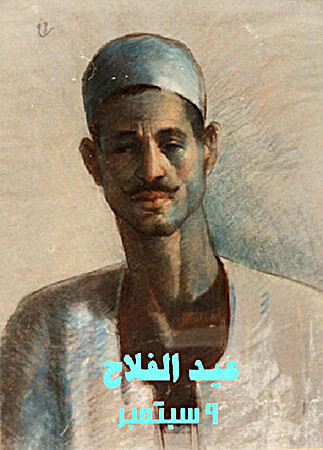

Value and Negotiation: The Refinement of the Dialectic
The corrupt intellectual is the result of a historical experience, a legacy. Egypt’s now-failing middle class staked a claim within a national power base over the past sixty years by locating its claims and subject positions within the collectivized motivations of a constructed national project. This educated petite bourgeoisie forged its identity through the goals it announced for itself, and then used that identity to generate content for the propaganda it produced for the general social order. The voice that articulated these positions has thus always been of great significance and prominence. Therefore, and almost by structural necessity, the Egyptian intellectual’s relation to the imagined collective has always been a public one.
Cairo’s history over the past sixty years is the history of this voice. Under attack by the constantly shifting power relations within the social order, this voice has steadily become more and more hysterical as it fights to maintain the clearly defined positions of its class base. This relationship, between the public speaker and the stage he or she performs upon, is one in which the voice has always been inflected and motivated by the process of forging public associations between terms and their referents. The intellectual’s main role has thus been that of charting the relationship of the public to the organizing principles of the collective. Public discourse is what will always be a product and a victim of this relationship. Here witness the poet declaiming, the teacher speaking, the imam sermonizing, the guest on a talk show arguing.
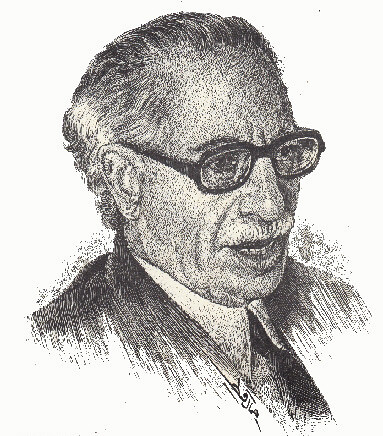

Thus both positions, the oppositional and critical, and the affirming mouthpiece of the regime, exist in a state in which the horizon of possible meanings is already defined and assumed as shared. The rhetorical strategies of both are similar, from those that sing praises to those that viciously ravage. Notice the impulse to constantly describe, explain, and resolve artworks in the service of a higher meaning. The mark of corruption is the insistence on validation and lineage in demonstrating the higher aims of the material at hand, and in therefore implicitly refusing the immanent materiality of the work itself.
The corrupt intellectual is an elusive figure: state bureaucrat, public critic, journalist, novelist, pundit, poet, student activist, downtown artist, café philosopher, soap opera screenwriter—one that constantly fails in his or her analyses, yet can still provide us with the possibility of analysis. For it is the collective labor of this figure that has provided the dynamics by which a field of knowledge that is public in nature has been constituted. Maybe what I have been labeling a “figure” so far doesn’t refer to any specific position, role, or actual individual but rather a shared sensibility that runs deep within an identifiable period or context.
The “corrupt intellectual” is both a statement about the nature of that which is shared, as well as its main product and symptom. It is thus a statement that is deeply implicated in the doxa of the day; it is what affirms a system, an order, and a regimen in the most literal sense. This kind of statement is inextricably linked to the production of the contours of daily events and their possible meanings. It is thus the labor of this intellectual functionary that lays down horizons, makes definitions, and proposes arguments. This act of production allows the event to unfold within a context that is accompanied by a sense of repercussion, the production of a resonance, an echo. To clarify further, it is only through such activities that a para-doxa, the romantic promise of a space beyond consensus, or a meta-doxa, the possibility of self-reflection and criticality, of holding a relationship to the consensus that is not merely affirmative, are imaginable in any real sense. In other words, it is only through the statement that the proposition is possible.3


For new institutions to be able to establish themselves successfully, they need to first supplant their precursors. This is a process that demands an active act of forgetting, as well as the ability to disguise the material and intellectual labor of constructing new edifices. At the same time, these institutions always place structural demands upon the discursive productions that coalesce to mark the moment of the new edifice’s emergence. These demands act as signs through which the perceptive reader can analyze something of the logic of such institutions. It is not really the content of these claims that is important here, but rather the manner in which certain utterances can be enunciated and the style in which statements are made. It is all, as Eliza Doolittle learned in the numerous and largely popular reiterations of Bernard Shaw’s own version of the Pygmalion myth, ultimately a matter of accent. Our argument or discussion is thus not possible without an implicit proposal about the nature of value and accumulation. To be more precise, the method through which value is negotiated is profoundly connected to how new meanings are assigned and normalized within the social order. The rise of a new institutional model is the occasion in which this kind of accumulation becomes most apparent.
It is thus with some sense of pride that I can now make this statement: the intellectual is always corrupt in relation to the project he or she touts. This is the fate of all those who attempt to produce a field of knowledge. For the function the intellectual performs is to point to the possibilities of a moment beyond consensus, yet only in order to affirm what the doxa itself can be. The location of an utterance or a proposition within the social sphere is invariably assigned by these very paradigms. To understand the resonance of these public statements, it is imperative to identify the position from which the figure of the intellectual speaks. To therefore hesitate for a moment and to evoke this figure, maybe as a conflicted memory or an annoyance, before beginning to write.
The Recuperation That Never Was
My text, seemingly involved in nostalgically and romantically resuscitating a slowly dying breed, does not ask for the rehabilitation of the corrupt intellectual in an absolute fashion. What we have here, perhaps contrary to my opening remarks, is a cynical, knowing defense of this sad, broken figure at the moment in which the triumphalism of the market and the industry of criticality have reached obscene proportions. However, let us not forget that the general symptoms discussed here reflect what is actually a much more powerful figure than my description would imply, for these are the individuals who run fine-art government sectors, head cultural pages in newspapers, write art histories, and lay down recommendations for acquisitions by national collections.
However, our corrupt intellectual has always been a local variant of an international phenomenon. This is a figure that secretly seeks the seal of validation from centralized centers of power, whether national or international, while constantly evoking a parochial and paranoid atmosphere to defend its claim over that seal. For example, in the case of art history, the same consensual if outdated canon is evoked to provide support and meaning for aesthetic practices. The local is always deemed insufficient without some kind of proof and validation provided by the accepted and so-called international canons of art history. As part of this process, the corrupt intellectual’s very existence provides, as demonstrated earlier, a certain density or depth to the experience of the work. For here the work never exists outside history, but is informed by its relationship to the two modalities of ideology in the discursive past: as discursive article of faith, or sociopolitical daily practice.
This external source of validation, mystified and made secret, is always qualified with local arguments informed by the ideological necessities that foreshadows the viewing experience. It is, however, still possible to bridge to an art history that manages in turn to connect to a wider shared international history and to thus provide a genealogy to the work that is not merely celebratory or damning. It is a project that will help us identify the mannerisms that dominate art practice at any given time. It would also help us identify the true significance of certain works in relation to the resonances they unleash.
This return to shared sources would be a deeply engaged historical project of tracing the contemporary moment through a system of comparative analyses; all divergences of local singularity and international multiplicity would be considered. However, while doing this it is absolutely important to insist that knowledge is instantaneously transferable, that what is understood at any one point or place immediately and irrevocably becomes of that place.


Yet the corrupt intellectual’s fall from power, accompanying a general decline of the state, can be partially traced back to a stubborn refusal to admit the genealogy of his or her practice that is not purely mythical. Instead, the corrupt intellectual falls back on what is offered as a mystical, authentic source for defining the functions of intellectual work within the system he or she supports and operates under. The moment of such an intellectual’s emergence, unfortunately always hidden or disguised, is deeply entwined with the rise of nationalist sentiments. It is therefore no surprise that an emphasis on the site of production is endemic to the political project itself. Thus locale, a situated sense of place that lies in opposition to the floating signifiers of global capital, becomes significant. This opposition between the dictates, constrictions, and potentials of locale and an unfixed non-essential space that accepts and absorbs all influences as its own still provides a meaningful density to the art experience that has never been merely diachronous, but also, and significantly, synchronous. The local art history brought to bear in attempting to describe contemporary art practices is rendered superficial and corrupt, but is constantly understood to be relevant; and it always remains in the background in order to support the doxa.
It may be that the genealogy of the intellectual within the concrete context of the history of the Arab Republic of Egypt could be the very salvation of this figure. Such a genealogy is only the logical extension of a statement—one that acculturates and accumulates over history and layers over time to constitute an inherent part of its own very discursivity in a certain place. That genealogy gives us a handle with which to approach that figure and understand its context, its resonance, and perhaps even its poetics. One may wonder what kind of practice can arise out of such engagement, but this is not the place for prescriptions. Rather, it is only to suggest the possibility of a real form of practice experienced in time through labor, investment, and engagement, that will one day, one hopes, explain itself according to the terms that it sets forth.
The density referred to earlier in relation to the crowd is also related to the auratic nature of institutions of power, whether local or international in scope. It is based on the sense that the work of art is in communication with a canon that was involved in the construction of a national archive, a sense that all gestures are therefore charged, and that the meaning of a history is located in the experience of a place. It is thus important to remind the young curatorial-program graduate preparing an immaculate white space in the clean, empty city, that this very aura of history and its institutions (rather than any claims, premises, or promises) was, in itself, a motivational force for a national project.
Always suspended between having to serve a tireless machine of projections and a reified illusionary spectacle of the past, the figure of the corrupt intellectual is thus doomed to lose all relevance in the course of surrendering its place in the imaginary to the infinitely more spectacular and wealthy trans-, meta-, inter-, and post-nationalist institutions slowly rising on the horizon.
The recuperation proposed here makes demands—in a sense, the corrupt intellectual this text has constructed provides a context that, due to its very lack and failure, manages to produce the crowd as an entity that is not merely, completely engineered. These lacks and failures should suggest that the system of cultural reflection is always unable to produce that which it hopes to. The defective product is thus a site of contention in a way the successful one can never be. My argument is precisely that this constitutes a space where an argument can exist and be sustained.
This recuperation is concerned with the question of how to understand cultural production, namely, by means of an insistence on what is always contextual—not as a source of explanation as much as the site of accents, of something that can never be taken for granted and assumed to be a basic right, of what is, by definition, always a constant series of negotiations that one finds strangely productive. It is thus in the office of a rubber-stamping bureaucrat that one can find moments of freedom that are never possible in a deep and engaged critical discussion in an art school classroom.
This recuperation concerns a figure that has been constructed as a necessary fiction against which the liberal, humanist, positivist sphere can operate and gain validity, and a position within the contemporary workings of cultural life. For it is partially in response to this figure (and the system he or she embodies) that the ground has been laid for a banal and no less corrupt opposition.
Our recuperation here is based upon denying the validity of that opposition, on denying the dialectical movement its aura, even if it does take place in a historically conscious fashion. Here we deny this opposition the value it constantly tries to attach to itself.
And finally, our recuperation is a refusal of the lazy lack of investment that is generally discernible in the liberal intellectual’s perspective: the space of relativism and disingenuous democratic values, as well as the double-faced gestures of inclusion that subtly enhance the accumulation of power. Whatever is deemed irrelevant to the perpetuation of this system is assigned an ignominious, painful, and silent death.
It is this cold death that we want to avoid.
It proposes a paradoxical argument; its collection of statements undermines the dialectical model they are based on.
Here, the context is not meant as a social, economic, or political explanation, as it is usually understood. Rather, it refers to the coordinates through which actual public discourse is produced. In this sense, the context functions as a system of references that anchors statements and gives it its own depth. It is therefore the order—one can call it institutional in the widest sense—that organizes the information that the statement depends on for its material. This act of organization also invariably puts an accent on the statement when it is produced. This accent or mark, when analyzed, communicates valuable information about that statement, from a genealogy of the origins of the statement, to a premonition of what that statement is supposed to achieve.
All socioeconomic systems are constantly involved in producing or even searching for discursive fields where their constitutive elements and subjects, regardless of their specificities, are held to an absolute measure. Composed of limits and ends, these discursive fields are also collections of general statements that define the public discourse and dominant paradigms at any historical moment. In order to question these assigned meanings, to even register the assumptions that they are founded upon, it is necessary to engage the discursive formation that allowed these statements to be made in the first place. Developing the protocols of this engagement would constitute a full-fledged theoretical project, one that I will hopefully have the opportunity to discuss more fully elsewhere. It suffices here to point out that this is an engagement that does not necessarily have to be an affirmation.
An earlier version of this text first appeared in How to Begin? Envisioning the Impact of Guggenheim Abu Dhabi, a thesis project edited by Özge Ersoy at the Center for Curatorial Studies, Bard College.

